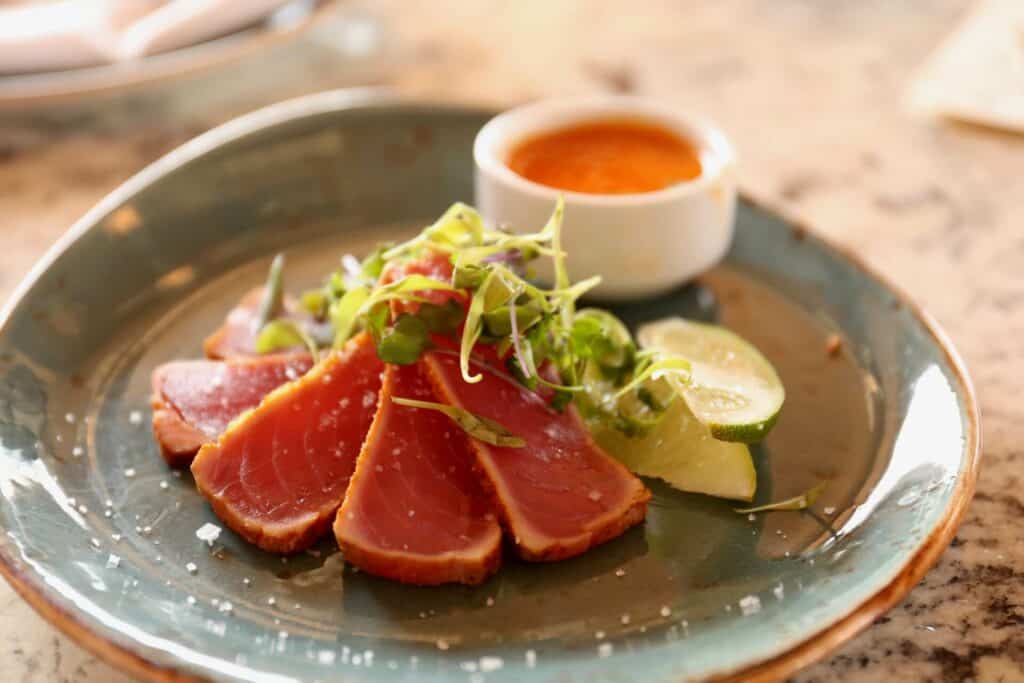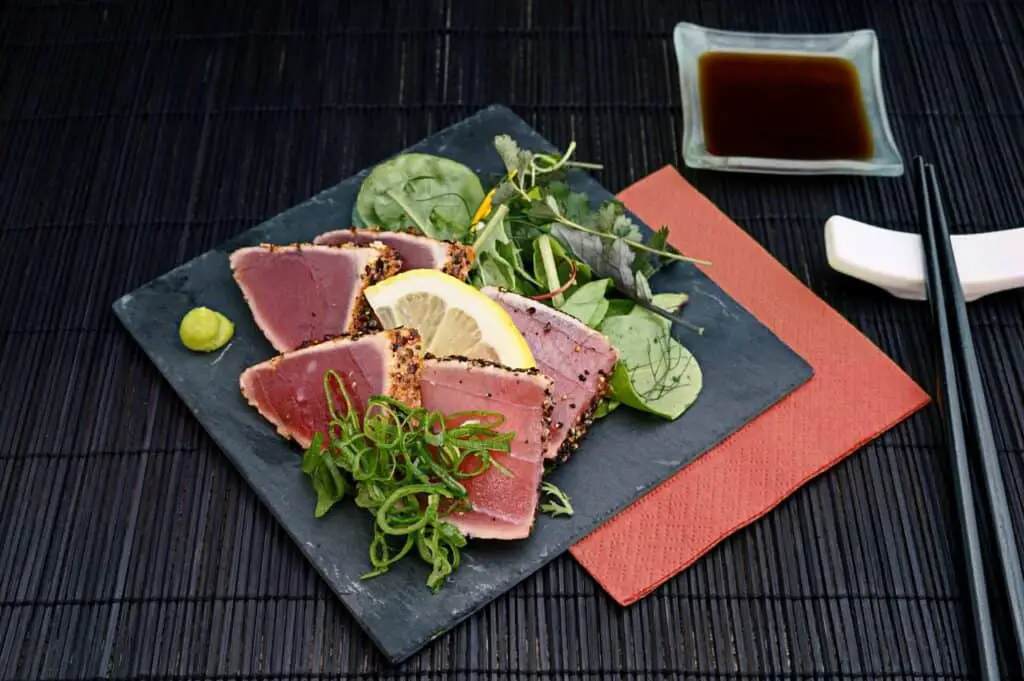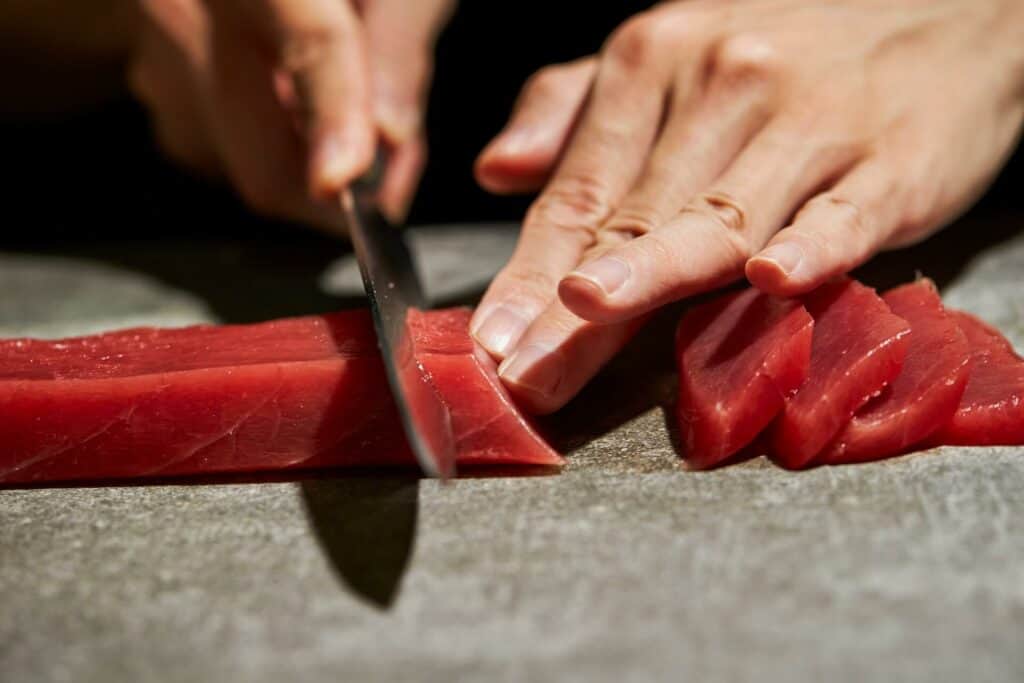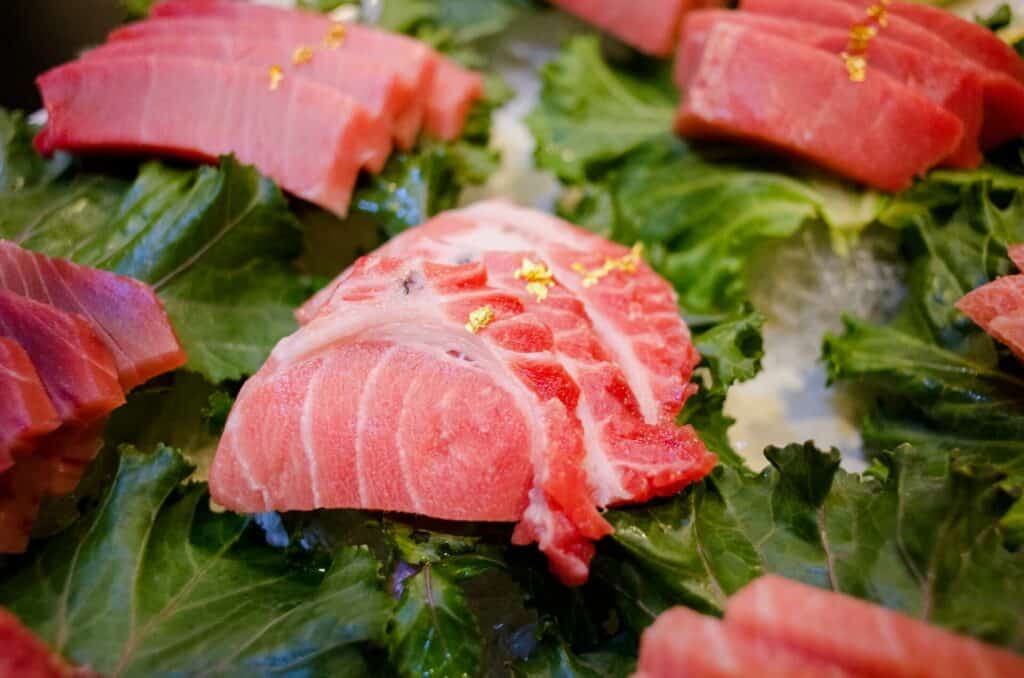Many of those who wish to get to know Japanese cuisine want to learn more about one of the most popular delicacies – sashimi – and discover all its types. So, what is tuna sashimi, and what makes it special?
Tuna sashimi is a delicacy made from thinly sliced tuna combined with different condiments and garnishes. It can be made from different tuna kinds and different parts of tuna, but it’s known as one of the most popular sashimi types. It is a delicious meal that can have plenty of health benefits as long as it’s made from sushi-grade fish.


If you want to find out what makes this dish so popular not only in Japan but worldwide, just keep reading.
Tuna Sashimi Is the Most Popular Type of Sashimi Dish
Sashimi is one of the most famous delicacies from Japan. Its primary ingredient is raw, thinly sliced fish, and in many restaurants, the fish chefs prefer tuna or maguro. Depending on the tuna type or part, this dish can have different flavors, from mild to strong ones.
However, since fish meat is usually eaten fresh, not cooked, note that it must be of the best quality. Keep in mind that prime-quality maguro usually doesn’t taste or smell fishy. If it does, it’s not the best quality and, therefore, shouldn’t be eaten raw.
Different Types of Tuna Sashimi
Many people don’t know that there are many different maguro types, and many of them can be used for this dish, depending on personal taste. Take a look at the table below to see the most popular tuna type used in Japanese cuisine:
| Type | Japanese name | Color | Taste |
| Bluefin | Kuro maguro | Dark red | Medium-full, combined with a meaty texture |
| Bigeye | Mebachi maguro | Deep red | Sweet and rich |
| Yellowfin | Kihada maguro | Bright red | Mild and meaty |
| Albacore | Bintoro maguro | Light pink | Very mild |
| Skipjack | Katsuo maguro | Red | Strong and fishy |
Note that tuna maguro tastes don’t differ only between tuna types – different parts of the fish are also known to taste differently. Therefore, with bluefin kind, one of the most popular sashimi ingredients, you can get:
- Otoro – the belly of the fish, fatty and delicious, which is why it’s most desirable,
- Chutoro – section closest to the head; has a dark red color and medium fat content,
- Akami – the center; contains less fat.
What Is Sashimi-Grade Tuna?
Sushi or sashimi-grade fish is a fish that is entirely safe to be eaten raw, the way it’s prepared in these delicacies. However, to do so, it must be free from parasites and bacteria.
To kill potential parasites, The United States Food and Drug Administration recommends freezing the fish for a specific period before consuming it, and many fishmongers follow their guidelines. As for bacteria protection, the raw fish must be handled in completely sterilized environments.
Although tuna is known as one of the safest fish to consume raw, note that sashimi-grade is not an official label – fishmongers can declare their product sushi-grade even when they are not the highest quality. That is why you should buy sashimi tuna only at trustworthy fish markets and search only for reliable fishmongers.

What Other Ingredients Does Tuna Sashimi Have?
Tuna is the basic ingredient of every tuna sashimi, but it’s not the only one. It’s often served with traditional Japanese condiments such as dipping sauces (usually soy sauce), wasabi, and pickled ginger. Grated garlic and fresh ginger can also be used, depending on the recipe.
Aside from the condiment, this delicacy is usually accompanied by different garnishes. Traditionally, those are shiso leaves and shredded daikon radish. However, you can also use different vegetables, lemon, microgreens, sesame seeds, and seaweed.
How to Slice Tuna for Sashimi?
Presentation is essential in Japanese cuisine, so professional and home chefs pay a lot of attention to the aesthetics of each plate. Aside from garnishing the plate, they also approach maguro cutting with the utmost care.
Japanese cuisine knows several different slicing techniques. With maguro, the most popular method is cutting the fish block into rectangular slices. It’s called hira-zukuri. It demands a well-sharpened sashimi knife since you need to cut in one motion. All pieces should be between ¼ inch and ⅓ inch thick and almost identical to one another.

Is Tuna Sashimi Healthy?
When stored properly, maguro fish can have a positive impact on health. It’s rich in omega-3 fatty acids, iron, B vitamins, potassium, and selenium, which can all be highly beneficial. Moreover, sashimi usually implies other fresh and healthy ingredients, such as vegetables or wasabi.
However, it’s not recommended for those whose immune systems may be compromised, pregnant women, or the elderly due to potential parasite and bacteria infection.

What Other Fish Types Can You Use for Sashimi?
Maguro sashimi is the most popular type of this delicacy, but note that it can be made from many different kinds of fish and marine organisms. Aside from tuna, yellowtail and salmon sashimi are most common in both Japanese and Western cultures. Moreover, some people prefer them served together as different parts of one sashimi dish.
However, as a base for this delicacy, chefs also serve other types of seafood, like:
- Halibut,
- Scallops,
- Sweet shrimp,
- Red clam,
- Squid,
- Octopus,
- Horse mackerel,
- Red snapper,
- Sea bream.
Tuna Sashimi Is Easy to Prepare, Even From the First Try
You don’t have to book a table in a high-end restaurant to enjoy first-class tuna sashimi – all you have to do is learn how to sashimi tuna on your own. You’ll only need a few ingredients to make this healthy yet incredibly delicious meal. Search for a sushi-grade tuna on a trusted fish market, find a recipe with your favorite condiments, and enjoy this flavorful delicacy in no time.